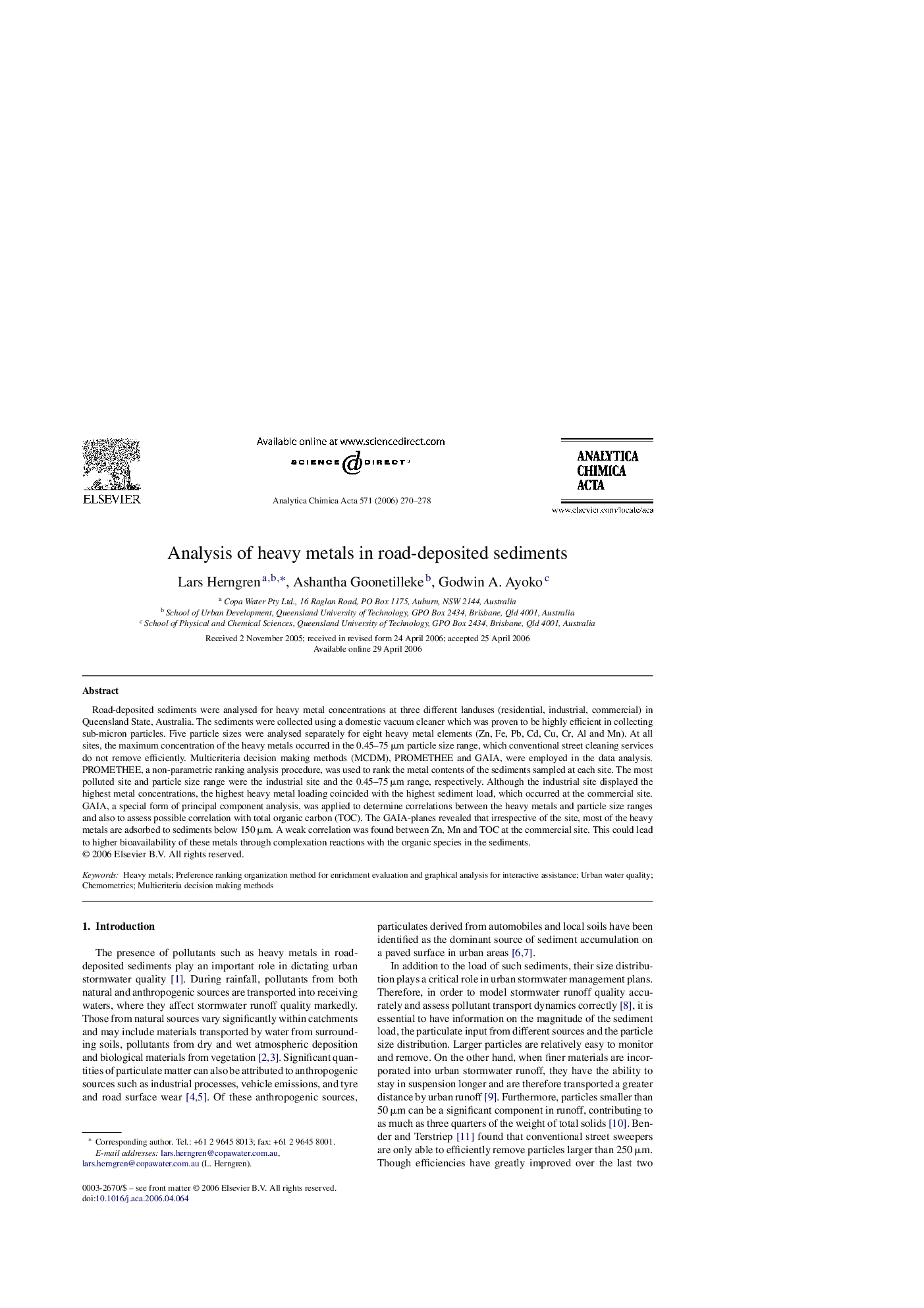| Article ID | Journal | Published Year | Pages | File Type |
|---|---|---|---|---|
| 1171976 | Analytica Chimica Acta | 2006 | 9 Pages |
Road-deposited sediments were analysed for heavy metal concentrations at three different landuses (residential, industrial, commercial) in Queensland State, Australia. The sediments were collected using a domestic vacuum cleaner which was proven to be highly efficient in collecting sub-micron particles. Five particle sizes were analysed separately for eight heavy metal elements (Zn, Fe, Pb, Cd, Cu, Cr, Al and Mn). At all sites, the maximum concentration of the heavy metals occurred in the 0.45–75 μm particle size range, which conventional street cleaning services do not remove efficiently. Multicriteria decision making methods (MCDM), PROMETHEE and GAIA, were employed in the data analysis. PROMETHEE, a non-parametric ranking analysis procedure, was used to rank the metal contents of the sediments sampled at each site. The most polluted site and particle size range were the industrial site and the 0.45–75 μm range, respectively. Although the industrial site displayed the highest metal concentrations, the highest heavy metal loading coincided with the highest sediment load, which occurred at the commercial site. GAIA, a special form of principal component analysis, was applied to determine correlations between the heavy metals and particle size ranges and also to assess possible correlation with total organic carbon (TOC). The GAIA-planes revealed that irrespective of the site, most of the heavy metals are adsorbed to sediments below 150 μm. A weak correlation was found between Zn, Mn and TOC at the commercial site. This could lead to higher bioavailability of these metals through complexation reactions with the organic species in the sediments.
